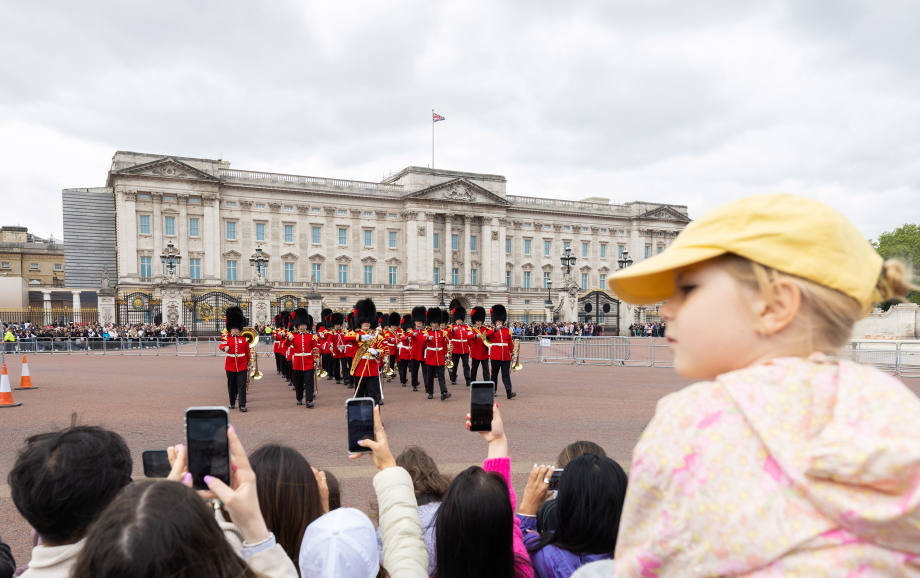Carried out by soldiers on active duty from the Foot Guards who have guarded the Sovereign and the Royal Palaces since 1660, the sight of their famous bearskin hats and red tunics is indelibly linked with Buckingham Palace and the British Monarchy.

Accompanied by a full military band playing a selection of music ranging from traditional marches to songs from musicals and familiar pop songs, the ceremony is both a colourful military tradition and an important reminder of the close relationship between the Armed Forces and their Head: The King.
Household Troops have guarded the Sovereign and the Royal Palaces since 1660. When Queen Victoria moved into Buckingham Palace in 1837, the Queen's Guard remained at St James's Palace, with a detachment guarding Buckingham Palace, as it still does today. The Changing of the Guard ceremony marks the moment when the soldiers currently on duty, the Old Guard, exchange places with the New Guard.
The guard duties are normally provided by a battalion of the Household Division, but also sometimes by other infantry battalions or units. For example, around the time of Queen Elizabeth II's Coronation in 1953, soldiers from Canada, Australia, South Africa, New Zealand, Ceylon and Pakistan all participated in the Changing of the Guard, and today we regularly see regiments from across the Commonwealth, as well as from the Royal Air Force and the Royal Navy performing Changing the Guard.
You can find more information about the origins of the ceremony, details of the seven different regiments which make up the Household Division, and a detailed explanation of the ceremony on the Household Division's website.



